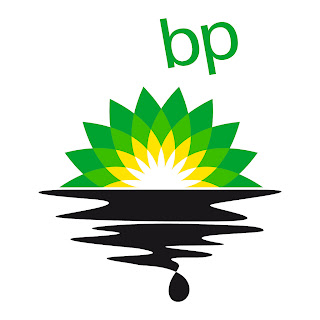BP Gulf Oil Spill 1-Year Anniversary On April 20, 2010 the Deepwater Horizon offshore rig exploded. The resulting massive oil leak was known as the BP Gulf Oil Spill. However, as Lori DeAngelis of Dolphin Queen Cruises noted earlier in
2011 and in a previous
post [Dead Baby Dolphins at the Gulf of Mexico]:
"Obviously there has been a great effect to the dolphin community and to the waters of the Gulf of Mexico from the Deepwater Horizon Spill. Let's say Catastrophe, not Spill, because a Spill would have been able to be cleaned up, but this is beyond that now." (February 2011)
BP Gulf Oil Catastrophe and Massacre, More Than a Spill Therefore, this was not and is not the BP Gulf Oil Spill, but the
BP Gulf Oil Catastrophe and Disaster. Further, this
is the BP Gulf Oil Spill
Massacre. Massacre as in all the death in the Gulf as a result. A BP Gulf Oil Spill Marine Life Massacre that is ongoing one year later and apparently for years to come. The carnage of this massacre continues washing up on the beaches at the Gulf of Mexico. That is only what can be seen on the shore and on the water. Below the water is more death and destruction, as verified by the United States Navy, reported in an earlier
post in late 2010 [BP Gulf Oil Spill Impact: "Everything is Dead"].
Louisiana Marshes Are Dying In the video below, PBS returns to the Gulf of Mexico one year after the Deepwater Horizon oil rig exploded and the BP Gulf Oil Catastrophe and Massacre began to see what the consequences have been. An estimated 200 million gallons of oil "gushed out of the Macondo well" subsequently. Scientists and residents have differing opinions on the resulting impact. One resident, Dave Cvitanovich an oysterman, said in May 2010 he was worried about the environmental damage. Now, a year later, "he's more worried now" and says the Louisiana marsh lands "are dying". There is still oil in the marshes and the marsh grass is dead and dying, which then creates erosion. Marsh islands have disappeared in the past year.
BP: Remediation Efforts Are Effective Mike Utsler, the Chief Operating Officer of the BP Gulf Coast Restoration Organization, "insists the remediation being done is effective". He says the residual oil is being cleaned up to preserve and protect the marshes. From the Florida panhandle to the Louisiana coastline, Utsler says 95% of the residual oil has been cleaned up. "We will be there as long as it takes to complete that last 5%."
Has the BP Gulf Oil Spill Accelerated Louisiana Marsh Erosion? Maura Wood, Senior Outreach Coordinator of the National Wildlife Federation's Coastal Louisiana Campaign, says that any marshlands that received oil and the plants are not growing back "are very much at risk of being washed away".
Long-Term Effects of BP Gulf Oil Spill Ralph Portier, an environmental science professor at Louisiana State University, says it will be a few years before a final assessment can be made on the marshland impacts by the BP Gulf Oil Spill. Some effects will even take longer. "I think in the next 3-4 year we will have a pretty good handle on everything near shore and in our marshes. It's going to be the deep ocean stuff, what's really happening in these deep coral reefs offshore near the Mississippi canyon area, how they were affected. That story might take a decade to get an answer to."
Corexit Almost 2 million gallons of the oil solvent corexit were used as a dispersant during the event. The Environmental Protection Agency says the chemical has degraded to non-toxic levels. Is there a long-term effect of low levels of corexit sitting on the bottom of the Gulf of Mexico? LSU professor Ralph Portier asks whether the corexit will enter the food chain.
U.S. Coast Guard: Oil Is Still Coming Ashore Rear Admiral Paul Zukunft says oil is still coming ashore, including tar balls, and "there are still teams out there recovering those".
Disturbing Aftermath Maura Wood of the NWF says there are some disturbing effects of the BP Gulf Oil Spill that are known a year later. In February 2011, 36 premature or still-born dolphins washed ashore, many times higher than normal. "You see baby dolphins washing up dead, you see numbers of sea turtles (dead), beyond the norm, you see endangered sea turtles, Kemp's Ridley sea turtles. You see coastal marshes that are not growing back - that are black and dead and still covered with oil."
Shrimper: A Lot of Oil Is Still Out There Acy Cooper, Vice President of the Louisiana Shrimp Association says the oil is still there. Even though the government says the oil has been dispersed and degraded, Cooper says "It's there. How are they going to clean it up because they don't know where it's at. They won't go out there and actually find it. When you tell them where it's at, you don't hear anything back." He is concerned with the future and of similar effects in Louisiana that happened in Alaska with the Exxon Valdez oil spill, which affected fisheries for years afterwards. In Alaska, "it took 2-3 years before they knew the effects and that is what we are concerned about."




















